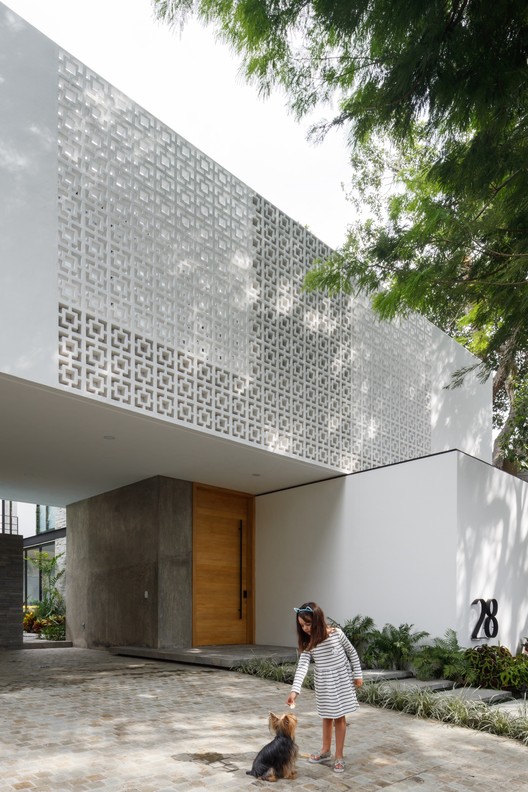House to Catch the Tree Takeru Shoji Architects
2015-12-16 17:00
架构师提供的文本描述。面对靖国神社,这个遗址就在有200年历史的日本雪松树旁边被发现。我们怎样才能把这种丰富的环境,不仅是在有特色的环境中宝贵的经验,而且是丰富的感情,带到日常生活中去?这是项目的起点。
Text description provided by the architects. Facing to the approach to a shrine, the site is found just beside gigantic 200-year-old Japanese zelkova trees. How can we bring this richness of surroundings as not only invaluable experience in the characteristic context but also richness of feelings into the daily life? That’s the starting point for the project.
恰当地,客户的要求是两个:第一,房子需要简单,并能够在未来的任何变化与愉快的老化过程中的房子在他们的一生。另一种是要充分利用遗址的丰富性:巨大的日本雪松树和通往神社的途径。
Appropriately, the requirements from the client are two: Firstly, the house needs to be just simple and capable of any future changes with enjoyable aging process of the house in their lifetime. And the other is to make good use of the richness of the site: gigantic Japanese zelkova trees and the approach to the shrine.
由于日本的泽尔科娃树高20米,以传统的方式,我们无法从一楼平凡的窗户上看到翠绿的树枝。因此客厅有3.5米高的天花板,而且还有一个大的高边带窗.在起居室的两端,也有阁楼空间作为楼梯的着陆空间。
Since the Japanese zelkova trees are 20 meters in height, in a conventional way, we cannot get a view of verdant branches from mundane windows on the ground floor. Therefore living room has 3.5 meters of ceiling height, and moreover a large high-side band-window. At the both ends of the living room, there are loft spaces used also for a landing space of the stair.
在日常生活中,我们在微风中仰望摇曳的树木,甚至可以直接从阁楼空间的尽头的露台上触摸树木。
We look up swinging trees in the breeze from the large band-window in everyday life, and even we can touch the trees directly from the terrace at the very end of the loft space.
夏天,阳光透过树木进入客厅。秋天,五颜六色的叶子落在桌子上。因此,房子获得的环境和经验,就像我们在森林里吃饭、睡觉、读书和玩耍一样。
Sunlight filtering through the trees enters in the living room in summer. Colorful leaves fall on the table in autumn. Consequently, the house is obtained the environment and experience as if we ate, slept, read and played in the forest.
外面是西部的红色雪松,地板是脚手架雪松板,楼梯是由锻铁厂和劳安。利用它的材料,随着时间的推移,接受变化,房子捕捉树的目的是成为一个不断变化的房子,与客户的生活方式和季节。
The exterior is clad in western red cedar, the floor is covered with scaffolding cedar boards, and the stair is made with wrought iron works and lauan. Using the materials as it is, accepting the changes as time goes by, House to catch the tree is aimed at being an ever-changing house with the life style of the clients and the seasons.
 举报
举报
别默默的看了,快登录帮我评论一下吧!:)
注册
登录
更多评论
相关文章
-

描边风设计中,最容易犯的8种问题分析
2018年走过了四分之一,LOGO设计趋势也清晰了LOGO设计
-

描边风设计中,最容易犯的8种问题分析
2018年走过了四分之一,LOGO设计趋势也清晰了LOGO设计
-

描边风设计中,最容易犯的8种问题分析
2018年走过了四分之一,LOGO设计趋势也清晰了LOGO设计















































































